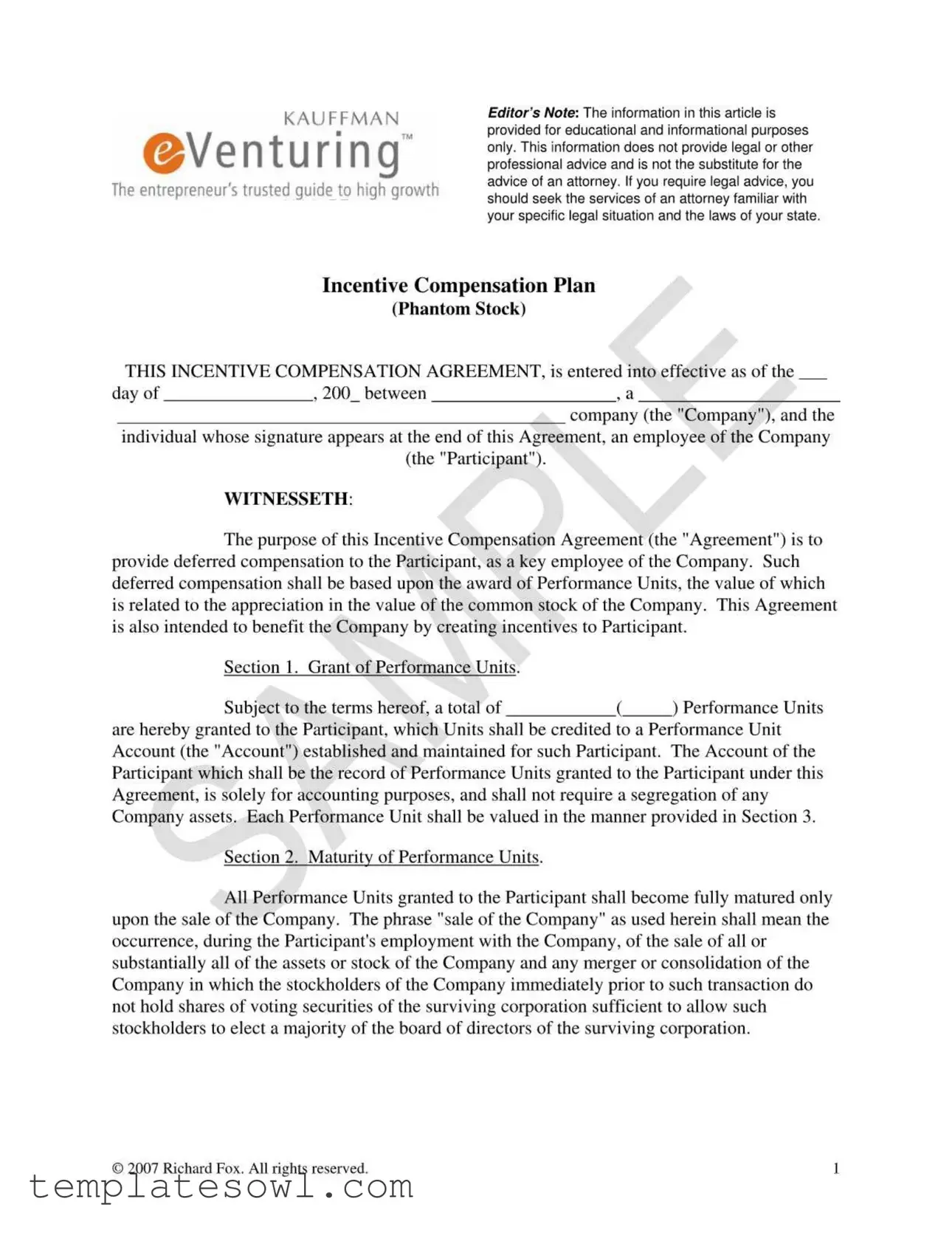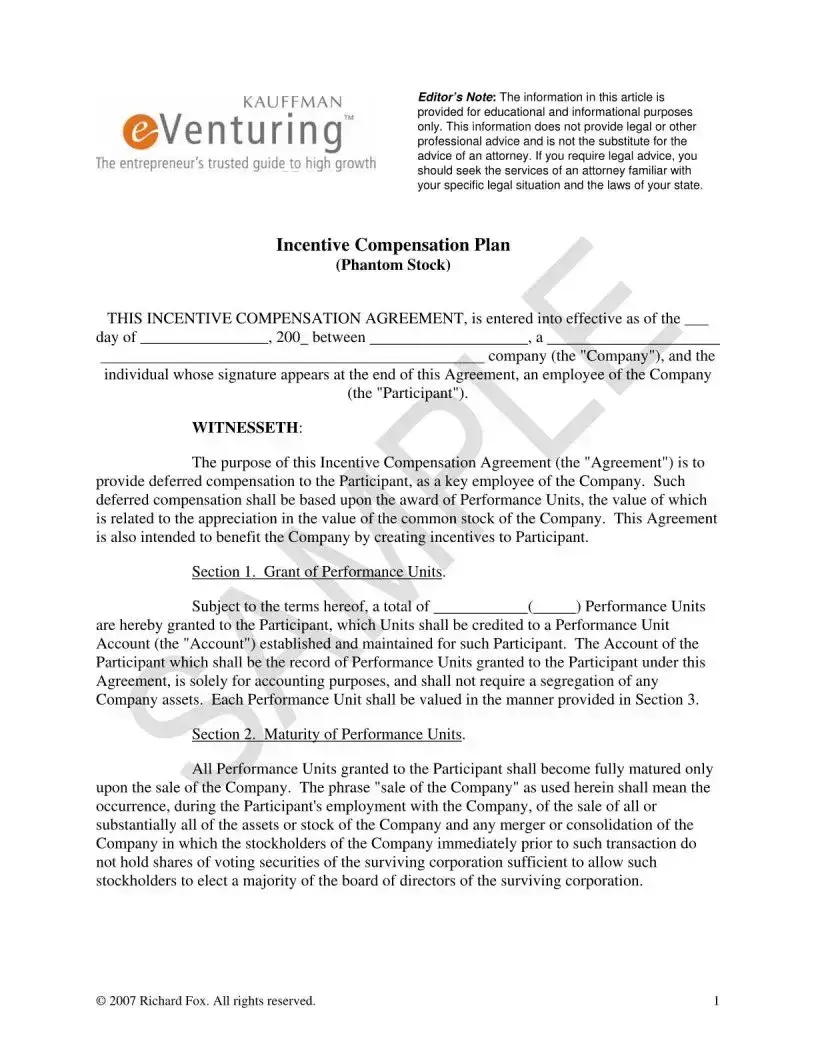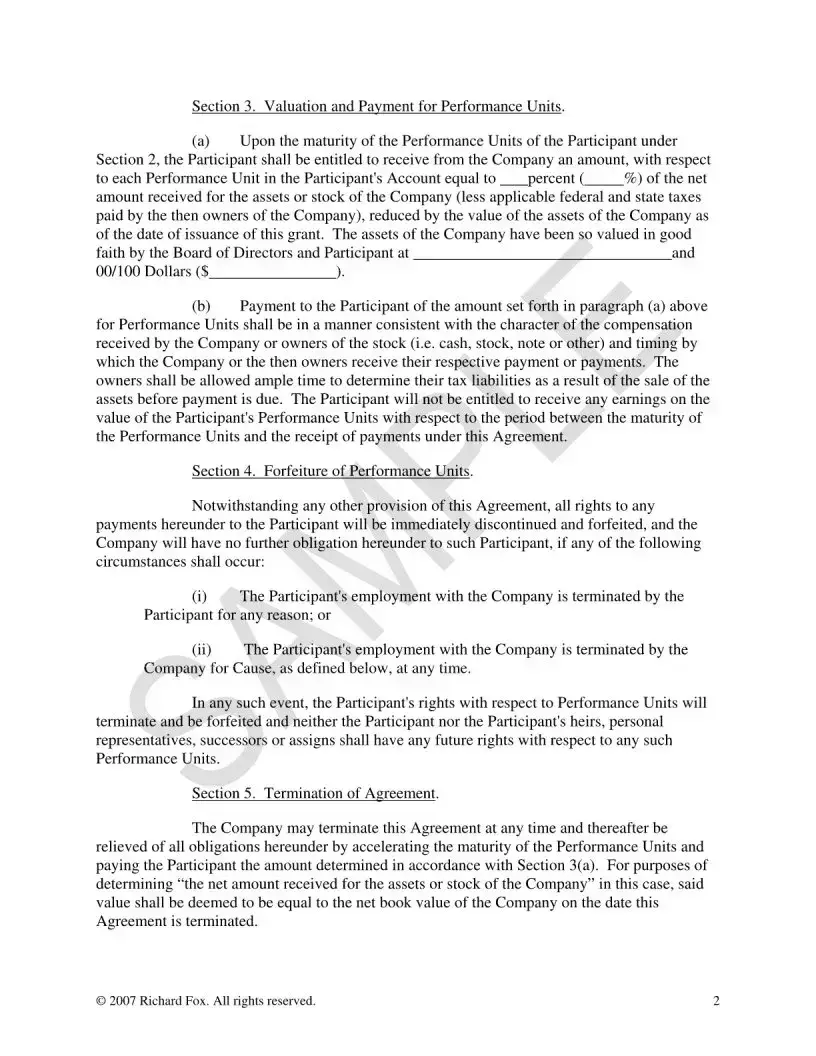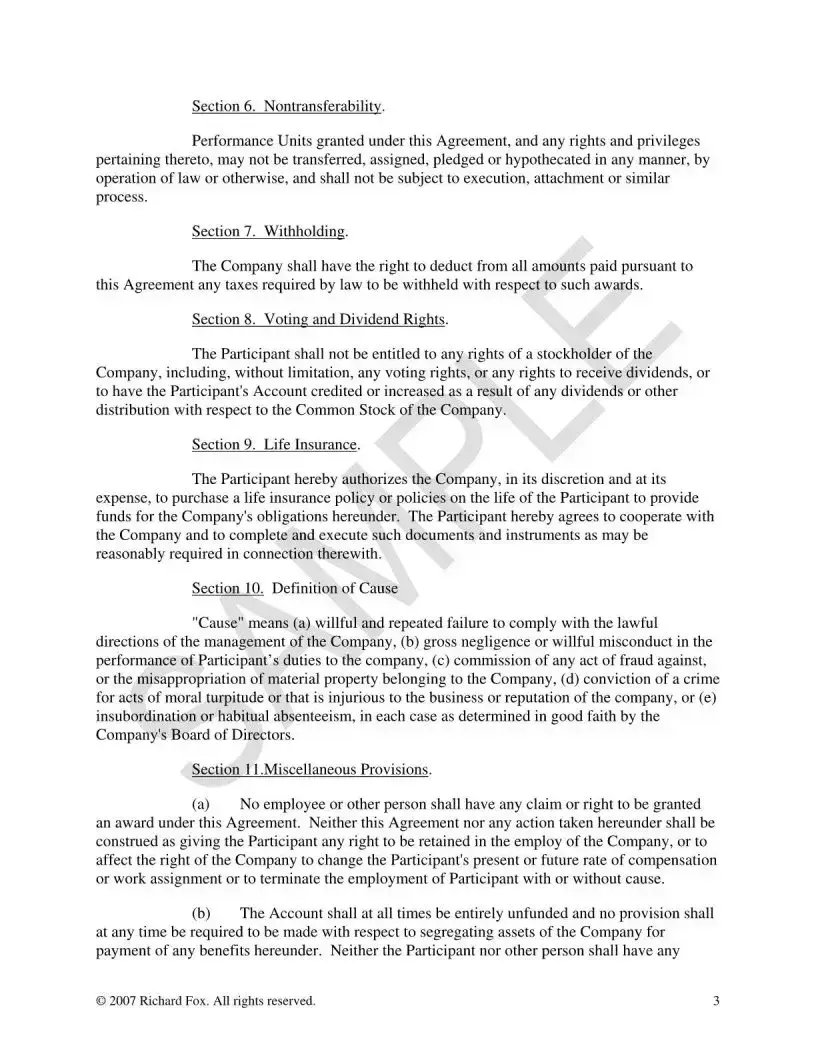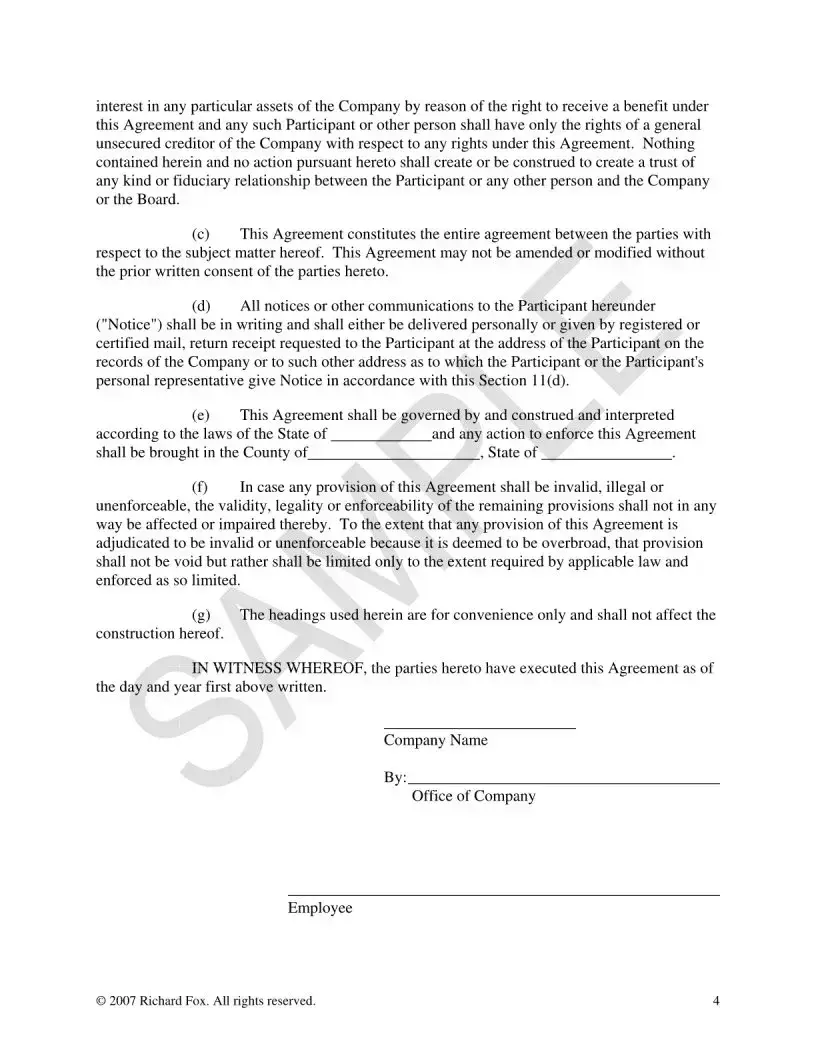What is the Phantom Compensation Plan?
The Phantom Compensation Plan is an incentive compensation agreement that aims to provide deferred compensation to key employees, known as Participants. The compensation is tied to Performance Units, which relate to the appreciation of the Company's common stock value. This plan not only rewards employees but also encourages their continued engagement and loyalty to the Company.
How are Performance Units granted?
Performance Units are granted to the Participant based on the terms of the Agreement. The total number of Performance Units awarded is recorded in a Performance Unit Account specifically maintained for that Participant. Importantly, this account serves accounting purposes only and does not require the segregation of any Company assets.
When do the Performance Units mature?
Performance Units become fully matured upon the sale of the Company. The sale can refer to the sale of all or a significant portion of the Company's assets or stock, or any merger that results in stockholders losing majority voting power in the surviving corporation. This structure ensures the Participant can benefit from the Company’s success.
How are the Performance Units valued?
Upon maturity, each Performance Unit is valued based on a percentage of the net amount received from the sale of the Company's assets or stock, after deducting relevant federal and state taxes. The specific percentage and value to be applied are defined in the Agreement. The valuation is determined in good faith by the Board of Directors along with the Participant.
What form will the compensation take once the Performance Units mature?
Payment to the Participant for the Performance Units can be made in various formats, such as cash, stock, or notes. This decision will align with the compensation character that the Company or its owners receive from the sale. Moreover, ample time will be provided to determine any tax liabilities before the payment is processed.
Can Performance Units be forfeited?
Yes, Performance Units can be forfeited. This occurs automatically if the Participant voluntarily terminates their employment or if the Company terminates the Participant for cause. Under these circumstances, all rights related to the Performance Units are terminated, and no future claims on them can be made by the Participant or their heirs.
What happens if the Agreement is terminated?
The Company holds the right to terminate the Agreement at any time. In such an event, the Company may expedite the maturity of Performance Units and compensate the Participant based on the net book value of the Company. This measure relieves the Company of further obligations under the Agreement while still providing the Participant with a determined payout.
Is this plan suitable for all employees?
This plan is specifically designed for key employees, typically those who play significant roles in driving the Company's growth. It may not be applicable to all employees, as the incentive structure is meant to attract and retain those whose contributions are crucial to the Company’s success.
Who should I consult for legal advice regarding this plan?
It is advisable to consult with an attorney who specializes in employment law when considering participation in a Phantom Compensation Plan. They can provide tailored advice based on individual circumstances and the specific legal implications associated with this type of incentive plan.
Where can I find more information about the Phantom Compensation Plan?
For more detailed information regarding the Phantom Compensation Plan, it is recommended to refer to the official documentation provided by the Company or consult their human resources department. They can provide clarity on potential benefits, obligations, and processes associated with the plan.
